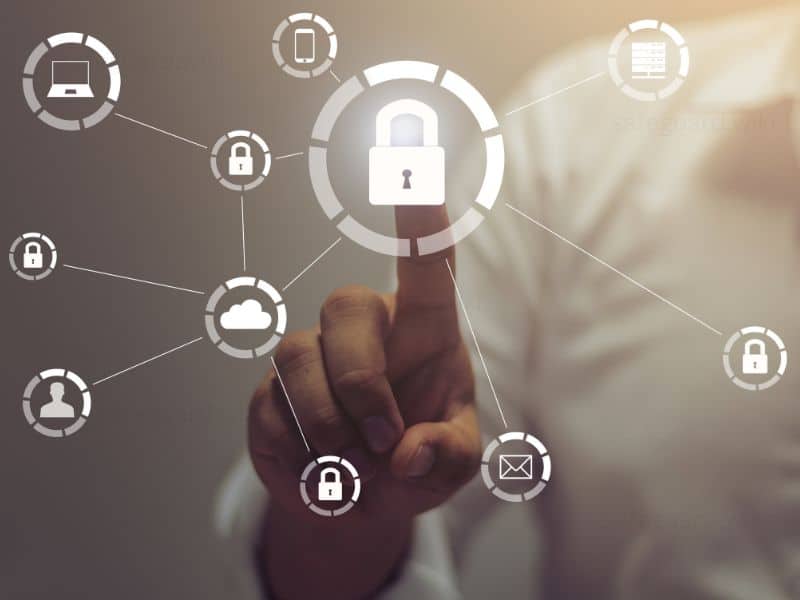The Importance of Cybersecurity
Cybersecurity, in its most basic form, is the practice of protecting computers, servers, mobile devices, electronic systems, networks, and data from digital attacks. These attacks often aim to access, change, or destroy sensitive information, extort money from users, or disrupt normal business processes.
Our lives are increasingly intertwined with the digital world. From online banking to social media and remote work, our personal and professional lives depend heavily on the security of our online interactions. But just like in the physical world, there are threats in the digital one too. Cybersecurity is our defense mechanism against these threats.
Imagine you’re visiting your favorite online retailer to purchase a new phone. You input your credit card details and hit ‘Buy’. In a world without cybersecurity, a hacker could intercept this transaction, steal your credit card information, and use it for their own purchases. This is a simple example of why cybersecurity is so important.
The Layers of Cybersecurity
Cybersecurity isn’t a one-size-fits-all solution; it’s a layered approach designed to protect against various types of threats. It’s like a medieval castle, with its high walls, moat, drawbridge, and guards, all working together to protect against different attack methods.
One of the layers is Network Security, which focuses on protecting the internal network from intruders. This is done through measures such as firewalls and intrusion detection systems.
Then, there’s Application Security. This involves securing applications from threats that can emerge during the application’s development and design stages.
We also have Information Security, which shields both physical and digital data, essentially ensuring that information is not lost, misused, accessed, or altered without authorization.
The Challenges in Cybersecurity
Cybersecurity presents a challenging landscape. The threats are constantly evolving as hackers become more sophisticated and innovative. It’s a continuous game of cat and mouse, with security professionals always striving to stay one step ahead of the cybercriminals.
Additionally, the widespread use of mobile devices and the rise of Internet of Things (IoT) devices have expanded the potential attack surface. Your smartphone, your smart TV, and even your smart fridge can become a gateway for hackers if not properly secured.
Another significant challenge is the human element. Phishing attacks, where a user is tricked into revealing sensitive information, are alarmingly common. Education and awareness are key in mitigating these types of threats.
The Role of Artificial Intelligence in Cybersecurity
Artificial intelligence (AI) is playing an increasingly important role in cybersecurity. Machine learning algorithms can analyze patterns and detect anomalies that might indicate a cyber threat.
For example, if a user typically logs in from a specific location during certain hours, and suddenly there’s a login attempt from a different country at an odd hour, AI can flag this as potentially suspicious.
AI is not a silver bullet, though. It’s an additional tool in the arsenal of cybersecurity professionals.
Cybersecurity is a vast and complex field, but understanding its importance, the layers involved, the challenges it faces, and the role of emerging technologies like AI can provide a solid foundation for further exploration. With our world becoming more digital every day, cybersecurity is a topic that affects us all, making it a critical area of knowledge in the 21st century.
Cybersecurity Threats to Look Out For
When discussing cybersecurity, it’s crucial to be aware of the multitude of threats lurking in the cyber world. Let’s delve into some of the most prevalent ones.
Malware is a common term that encompasses various malicious software, including viruses, worms, Trojans, and ransomware. These threats can wreak havoc on systems, either by damaging them, stealing data, or causing other disruptions.
Phishing, as we’ve previously mentioned, is a social engineering attack where the attacker masquerades as a trustworthy entity to trick victims into revealing sensitive information, such as credit card numbers or login credentials.
Man-in-the-middle attacks (MitM) involve attackers secretly relaying and possibly altering the communication between two parties who believe they are directly communicating with each other. It’s like a malicious interpreter in a conversation, twisting the words for their own benefit.
The Role of Cybersecurity Professionals
Just like in a physical war, we need trained soldiers to fight the cyber war. These cybersecurity professionals are the front line of defense against cyber threats.
One of their key responsibilities is to identify potential vulnerabilities in systems and networks and take steps to remedy these weaknesses. They also monitor systems for any signs of an attack and respond promptly when one is detected.
Many cybersecurity professionals also work on developing security policies and procedures to ensure that everyone within an organization understands their role in maintaining security.
They also need to stay updated with the latest threats and security measures. This requires continuous learning and adapting, making cybersecurity a dynamic and challenging field to work in.

Cybersecurity and Privacy Laws
Governments around the world have recognized the importance of cybersecurity and have implemented laws and regulations to protect citizens and organizations.
In the European Union, the General Data Protection Regulation (GDPR) has set strict guidelines on how companies should handle customer data. It also gives individuals more control over their personal data.
In the United States, there’s no single, comprehensive federal law regulating the collection and use of personal data. Instead, the U.S. has several sector-specific and medium-specific laws, like the Health Insurance Portability and Accountability Act (HIPAA) for healthcare data and the Children’s Online Privacy Protection Act (COPPA) for children’s data.
Understanding these laws and regulations is a key aspect of cybersecurity, especially for businesses that handle sensitive data.
The Future of Cybersecurity
Looking ahead, the future of cybersecurity will likely involve more advanced technology, both on the side of protection and on the side of attack. We can expect AI and machine learning to play an even more prominent role in cybersecurity measures.
At the same time, cyber threats will likely become more sophisticated as well. The rise of quantum computing, for example, could potentially pose new challenges for cybersecurity.
Despite these challenges, the importance of cybersecurity cannot be overstated. As our reliance on digital technology grows, so does our need for robust cybersecurity measures. Whether you’re an individual, a small business owner, or a leader in a large corporation, understanding cybersecurity is crucial.
This overview should serve as a starting point for your cybersecurity journey. There’s always more to learn, and the field is continually evolving. But remember every step taken towards understanding and implementing cybersecurity measures is a step towards a safer digital world.
Concluding Thoughts on Cybersecurity
In summary, cybersecurity is an ever-evolving field, intricately woven into the fabric of our modern digital lives. As we’ve discussed, it’s a multifaceted discipline, encompassing network security, application security, and information security, among others. It’s crucial to be aware of the prevalent threats, including malware, phishing, and man-in-the-middle attacks.
Moreover, the role of cybersecurity professionals in safeguarding our digital world cannot be overstated, nor can the importance of understanding relevant privacy laws and regulations. Looking ahead, we must be prepared for a future where cybersecurity threats and protections become increasingly sophisticated.
Embracing cybersecurity is no longer an option; it’s a necessity. The digital age has brought us many conveniences, but it’s also brought new risks. By enhancing our understanding of cybersecurity, we can navigate the digital world more safely and confidently.
References:
Simplilearn 1. What is Cybersecurity & Importance of Cyber Security
Cybersecurity is the protection to defend internet-connected devices and services from malicious attacks by hackers, spammers, and cybercriminals. The practice is used by companies to protect against phishing schemes, ransomware attacks, identity theft, data breaches, and financial losses.
Techtarget 2. What is Cybersecurity? Everything You Need to Know
Cybersecurity is the protection of internet-connected systems such as hardware, software and data from cyberthreats. The practice is used by individuals and …
Geekflare 3. An Introduction to Cyber Security Basics for Beginner
Cyber Security is the process and techniques involved in protecting sensitive data, computer systems, networks, and software applications from cyber attacks.
Itgovernance 4. What is Cyber Security? Definition & Best Practices
Cyber security is the application of technologies, processes, and controls to protect systems, networks, programs, devices and data from cyber attacks.
Knowledgehut 5. Fundamentals of Cybersecurity [The Basics Guide]
The basic cybersecurity concepts involve reducing cyber-attack risks and preventing unauthorized access to systems, networks, and technologies.
© 2016-2023 by LiVentures. All rights reserved. No part of this document may be reproduced or transmitted in any form or by any means, electronic, mechanical, photocopying, recording, or otherwise, without prior written permission of LiVentures.


